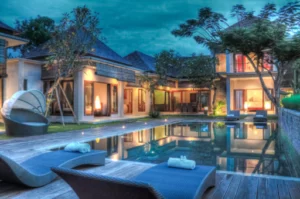City Council Approves Zoning Change for Thornton Road in South Austin
In a recent meeting on September 26, the City Council of Austin approved a smaller zoning change for a 4-acre site located on Thornton Road in South Austin. The decision marks a shift from a surprise change in the originally requested zoning. Council Member Ryan Alter played a key role in this process, working closely with various stakeholders to create a more suitable zoning plan than what the property owner had initially envisioned.
New Zoning Regulations
The newly approved zoning designation is multifamily-6 with a conditional overlay, which effectively eliminates commercial zoning options previously proposed. Furthermore, this change limits the height and impervious cover of any potential new building on the property. This was the final decision made by Council in a lengthy meeting, during which Council Members Paige Ellis and Alison Alter did not participate in the vote.
Community Concerns Heard
Local residents had been vocal in their opposition to the originally proposed DB90 zoning, which would have allowed for buildings up to 90 feet tall. Many residents had taken action by gathering a petition to express their concerns. However, City staff indicated that the petition did not meet the required threshold to trigger a supermajority vote from the Council.
Despite this setback, a number of concerned neighbors attended the meeting, keen to voice their worries about potential traffic issues that such a large construction project could bring to their community. It came as a surprise to many when attorney Michael Whellan revealed during the meeting that they would no longer seek the original density and height for the proposed development.
New Direction for the Property
Whellan explained that both he and his client had reached their new decision early that day. He stated that the property has been used for commercial and industrial purposes for the past 75 years. Under the current general commercial services zoning, the property could allow for up to 60 feet in height with 95 percent impervious cover and varied commercial uses. However, he highlighted that these uses do not include residential housing, which is their new goal.
Initially, the property owner had requested DB90 zoning to develop multiple residential units. Whellan also pointed out several multifamily and commercial properties nearby, noting the proximity to railroad tracks and mobile home communities across the tracks. He argued that the neighborhood has several exit routes, primarily along Oltorf Street, but raised concerns that this busy intersection lacks a traffic light — a point raised repeatedly by residents worried about safety.
Residents’ Voices Matter
Community members expressed their fears that the 90-foot building would exacerbate existing traffic issues. Leah Brown, a city employee and neighborhood resident, articulated these worries in an email to the Council. She described the recent influx of high-rise developments on South Lamar as detrimental to the neighborhood’s quality of life, saying it has created unsafe conditions for residents. Brown emphasized the need to keep new developments away from smaller neighborhood roads that cannot accommodate increased traffic.
City’s Response
Whellan mentioned that he had received assurances from the city’s Transportation Department that plans for a traffic light would be forthcoming, although the timeline for its installation remains uncertain. He indicated that the property owner would be contributing to the cost of the traffic signal.
A Compromise Reached
Council Member Ryan Alter, who moved to adopt the newly revised zoning, expressed appreciation for the patience of the community and noted that he had visited the site to better understand the neighborhood’s character. He acknowledged that a 90-foot building would have been excessive for the area and emphasized that further discussions regarding traffic management and improvements on Thornton Road would occur.
With this revised zoning plan in place, many in the community hope for a future that balances development with neighborhood safety and quality of life. The decision is seen as a step in the right direction for both the property owner and the residents of South Austin.









